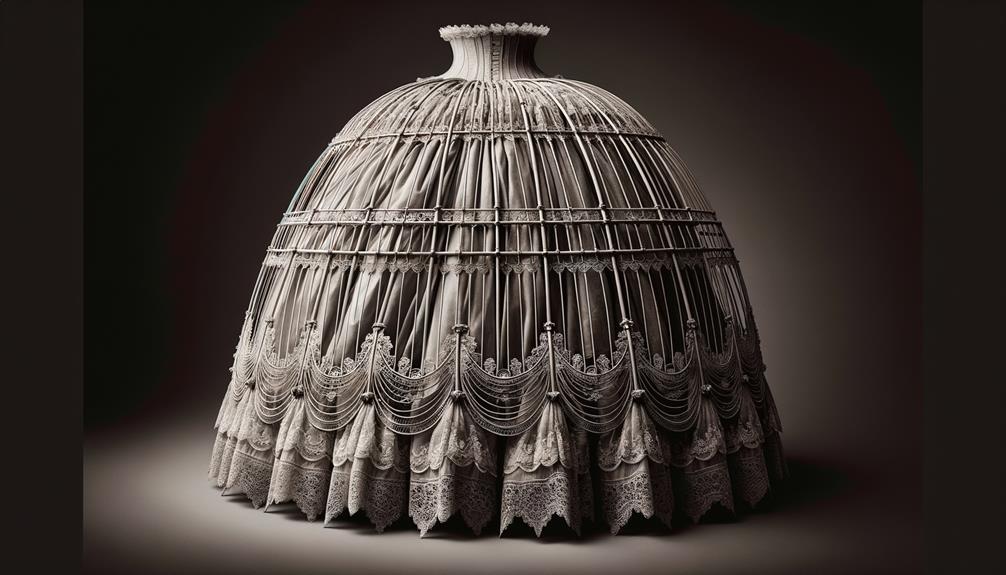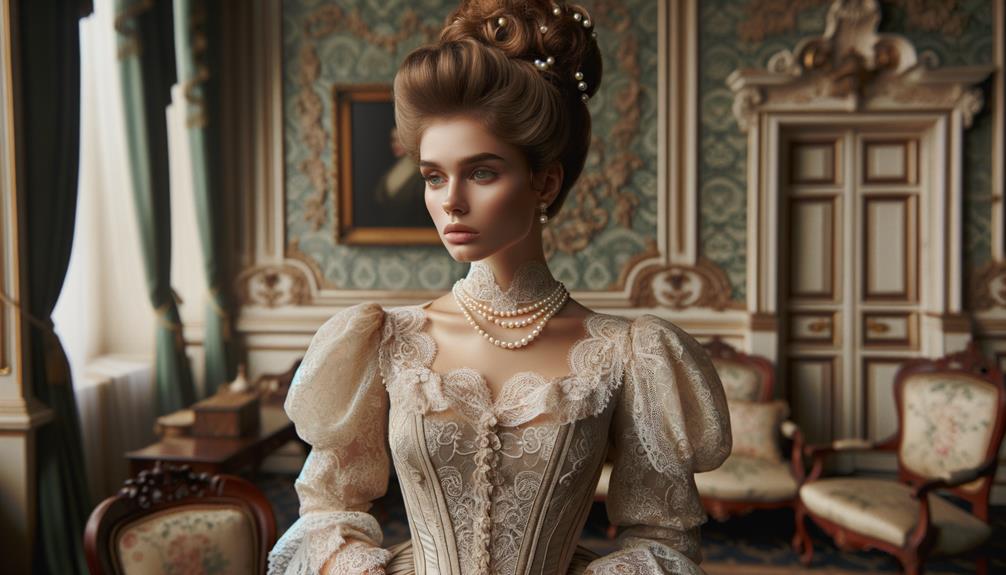I've always been fascinated by muttonchop sleeves, also known as gigot sleeves, which epitomize the quintessential Victorian silhouette. They initially gained popularity in the 1820s, and their dramatic, tapered shape, narrowing from the upper arm to a snug wrist, was a status symbol, signifying wealth and social standing. The drama and sophistication they bring to an outfit are truly timeless. In the 1890s, they experienced a resurgence, accentuating tiny waists and opulence. Modern designers, such as JW Anderson, draw inspiration from these historical patterns to create contemporary fashion statements. If you're curious about the enduring appeal of this style and its influence on fashion, there's much more to explore.
Historical Context
In exploring the historical context of muttonchop sleeves, it's clear how these striking garments reflected the evolving tastes and societal norms of the Victorian era. The mutton sleeve pattern, also known as the leg of mutton sleeve or gigot sleeve, first gained popularity in the 1820s. Their distinctive design—a voluminous upper arm that tapered into a close-fitting lower arm—was both dramatic and elegant, reflecting the opulence and excess of the time.
By the 1890s, muttonchop sleeves experienced a notable resurgence. This period saw a revival of Victorian styles, with the gigot sleeve once again becoming a symbol of high fashion. The exaggerated silhouette emphasized a woman's delicate waist while showcasing her wealth and social status through the sheer volume of fabric used. It's fascinating to see how these sleeves, which drew comparisons to a sheep's hind leg, captured the imagination of the fashion world during these eras.
Even today, the influence of the mutton sleeve pattern persists. Designers like J.W. Anderson have reinterpreted this iconic style, proving that innovation often finds inspiration in the past. This cyclical nature of fashion highlights the enduring allure of the leg of mutton sleeve.
Design Characteristics
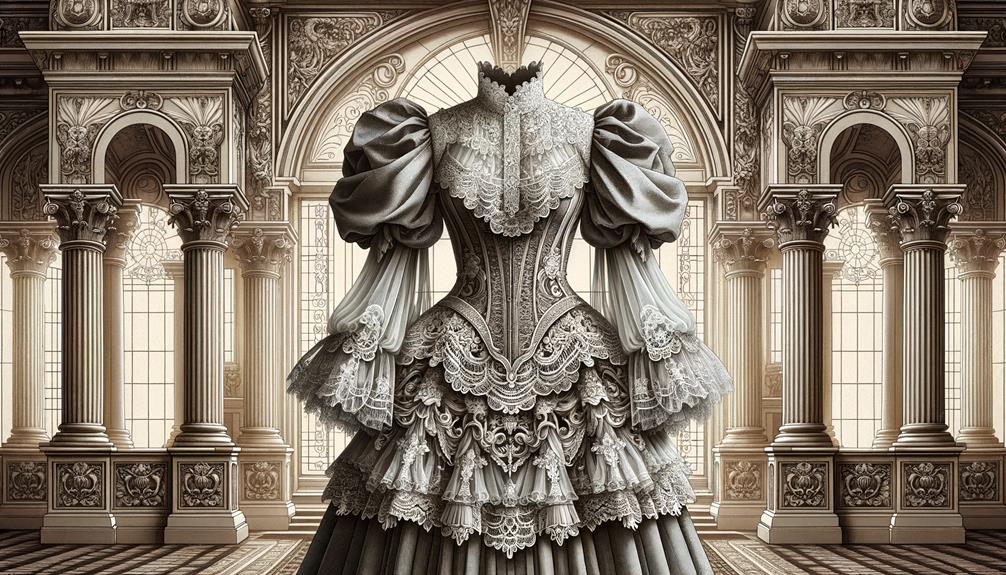
The muttonchop sleeve's unique silhouette is undeniably eye-catching, with its dramatic volume at the upper arm tapering to a snug wrist. This striking visual impact is reminiscent of Victorian elegance. Upon closer inspection, I admire how this sleeve style creates a sense of refined structure while drawing attention to the wearer's upper body.
The balance between the exaggerated upper sleeve and the tight lower arm is a testament to Victorian tailoring skills. This contrast not only adds aesthetic appeal but also reflects the era's fascination with opulence and precision. Modern designers, such as J.W. Anderson, have incorporated the muttonchop sleeve into their collections, demonstrating its timeless appeal.
In historical portraits and fashion photography, the muttonchop sleeve stands out as an iconic feature, symbolizing a blend of drama and sophistication. It's fascinating to see how its design has evolved, yet the core elements – the gigot shape and the tapered wrist – remain constants, highlighting its enduring influence in the fashion world.
Fashion Evolution
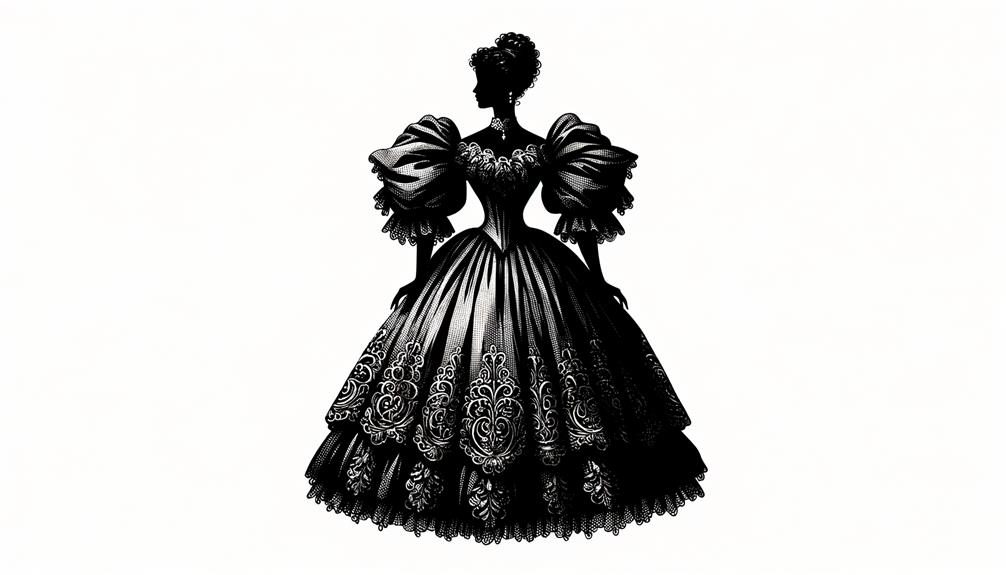
Tracing the muttonchop sleeve's evolution through various fashion eras, I'm struck by its adaptability and enduring charm. This distinctive sleeve style, also known as leg o' mutton or gigot sleeves, initially captivated the fashion world between 1825 and 1833. Its dramatic silhouette, characterized by voluminous upper arms tapering into a fitted sleeve at the wrist, was immortalized in portraits like François Joseph Kinsoen's 1828 depiction of a German Princess.
Fashion is cyclical, and the muttonchop sleeve's popularity waned by Queen Victoria's reign in 1837. However, it resurfaced in the 1890s during the Belle Époque. During this era, the sleeve style accentuated tiny waists, as vividly portrayed in Charles Ogereau's 1893 portrait of ClÃo de MÃrode. The gigot sleeves once again highlighted the wearer's elegance and sophistication.
In the 20th century, the muttonchop sleeve experienced a brief resurgence. However, it's in the modern era that the sleeve style truly shines. Designers like JW Anderson reimagine historical patterns, merging them with contemporary aesthetics to create innovative silhouettes. This blending of past and present underscores the muttonchop sleeve's lasting influence, proving that certain elements of fashion possess a timeless appeal. Through its various iterations, the leg o' mutton sleeve continues to inspire and captivate.
Cultural Significance
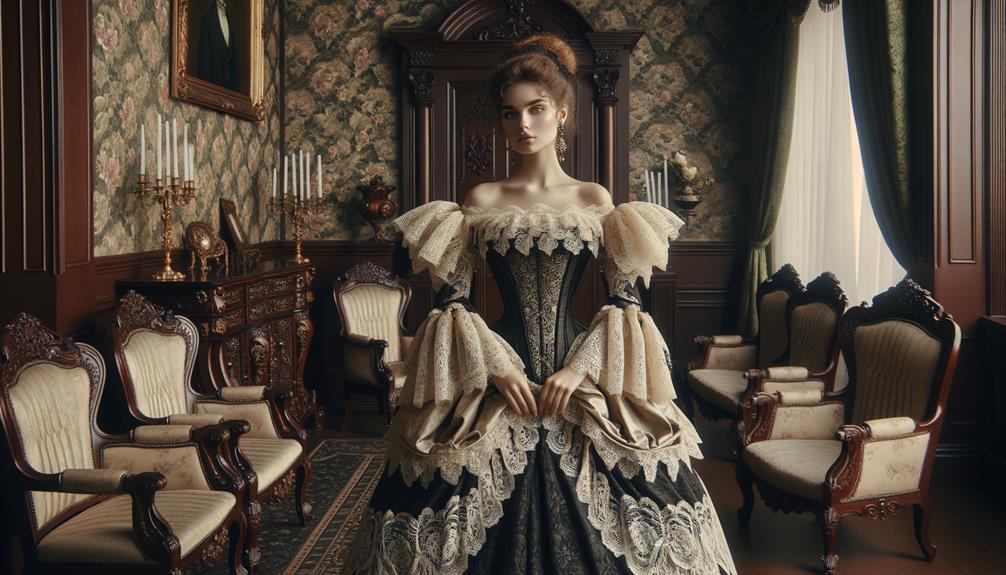
Observing the muttonchop sleeve's evolution, it becomes clear that its cultural significance extends beyond aesthetics. The voluminous upper portion, whether gathered or pleated, embodied the romanticism and grandeur of the early Victorian era. These big sleeves weren't just fashion statements; they were visual markers of social status and artistic expression. In portraiture, such as Françoise Joseph Kinsoen's 1828 depiction of a German Princess, the sleeves' dramatic presence underscores their association with elegance and sophistication.
The muttonchop sleeve's resurgence in the late nineteenth century and brief reappearance in the early twentieth century reveal its cyclical nature in fashion history. Despite ridicule in the 1890s, its periodic return suggests an enduring fascination with exaggerated silhouettes. Designers in the twentieth century, and even those creating Spring/Summer 2016 collections, drew inspiration from these historical patterns, demonstrating the sleeve's lasting impact.
This recurring motif illustrates how fashion elements can transcend their original context, continually influencing contemporary design. By mimicking the gathered or pleated upper portion seen in muttonchop sleeves, modern designers like J.W. Anderson bridge past and present, creating innovative silhouettes that resonate with today's audience.
Modern Interpretations
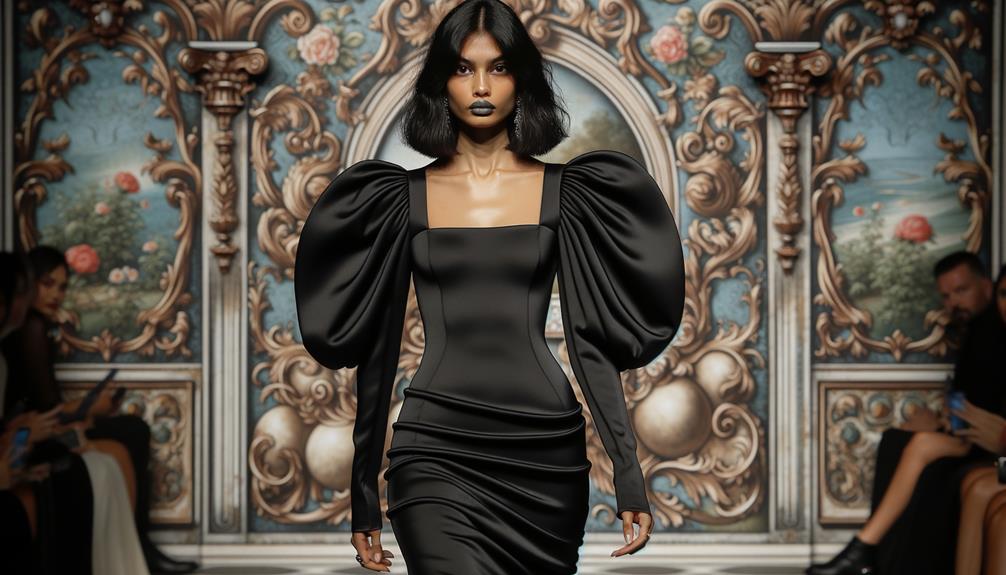
Modern interpretations of muttonchop sleeves blend historical elegance with today's fashion trends. Designers like JW Anderson are bringing back puffed sleeves, but with a modern spin. These designs often feature tightly fitted bodices that contrast strikingly with the voluminous sleeve shape, creating a mesmerizing silhouette.
Runway shows by Galliano, Pushbutton, and Sergeenko feature muttonchop sleeves with moderate width, offering a fresh take on the classic Victorian style. Meanwhile, Dolce & Gabbana, Siriano, and Schiaparelli reimagine traditional muttonchop sleeves with wider sleeve caps, pushing the boundaries of contemporary fashion.
Notable designs include JW Anderson's innovative collections, Galliano's modern twists with moderate width sleeves, and Dolce & Gabbana's reimagined wider sleeve caps. Detailed pattern making for various sleeve shapes allows designers to experiment with the contrast between puffed sleeves and tightly fitted bodices.
Different sleeve shapes have become a playground for designers, enabling them to create unique interpretations. This resurgence isn't just about nostalgia; it's about innovation, as fashion enthusiasts can now create their own interpretations using detailed pattern-making instructions and e-dossiers. The modern muttonchop sleeve is a testament to how historical elements can be reinvented to resonate with today's avant-garde sensibilities.
Frequently Asked Questions
What Were Victorian Sleeves Called?
Victorian sleeves were often referred to as 'muttonchop sleeves.' I find it fascinating how fashion evolves over time, with these dramatic, voluminous designs reflecting the boldness and creativity of an era. It's intriguing how historical details like these inspire modern innovation.
What Was the Leg-Of-Mutton Sleeve in the 1890s?
The leg-of-mutton sleeve, a fashion sensation in the 1890s, was characterized by its dramatic, voluminous upper arms that tapered to tight wrists. It required a substantial amount of fabric, around 2.5 yards, which reflected the grandeur of the Victorian era and left a lasting impact on fashion history.
What Is the Leg-Of-Mutton Sleeve Theory?
The leg-of-mutton sleeve theory fascinates me because it showcases how fashion trends often come full circle. This dramatic sleeve style, which starts wide and tapers down, has evolved over time, demonstrating how past trends inspire modern innovation.
What Is the Meaning of Mutton Sleeves?
Mutton sleeves are a fashion staple featuring large, gathered upper arms that taper to tight wrists, evoking the image of a sheep's leg. Over the centuries, they've undergone significant transformations, reflecting shifting trends while maintaining a timeless appeal in both modern and historical fashion.



